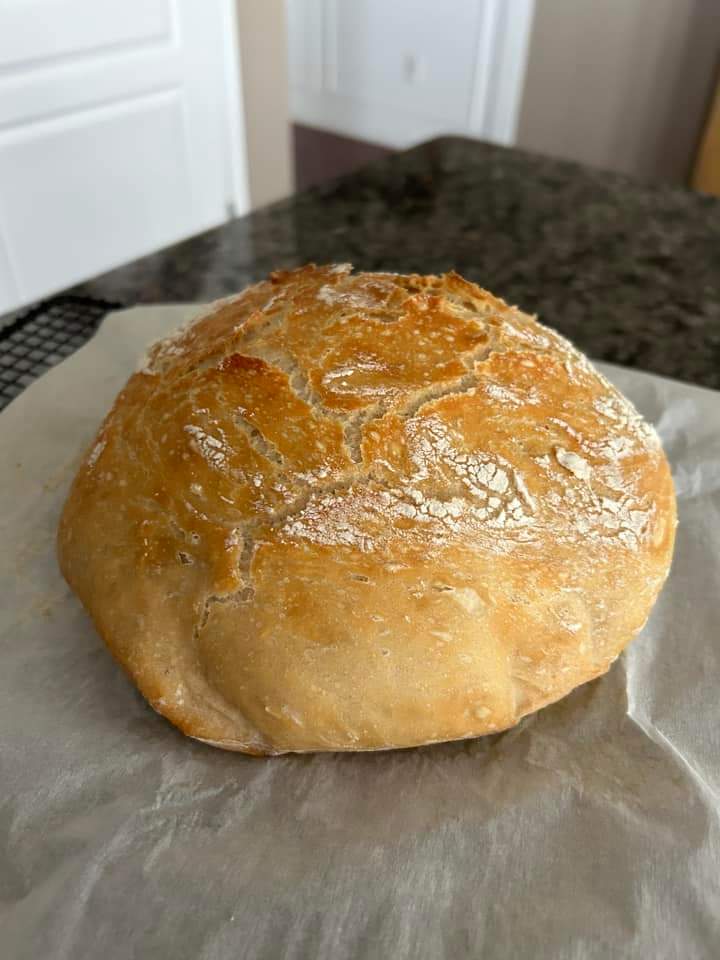Mastering the Art of No-Knead Bread: A Beginner’s Guide
Introduction
No-knead bread has revolutionized home baking, offering a simple yet delicious way to create artisan-style loaves without the need for extensive kneading. In this comprehensive guide, we’ll explore everything you need to know about making perfect no-knead bread at home.
What is No-Knead Bread?
No-knead bread is a bread-making technique popularized by baker Jim Lahey, which eliminates the need for extensive kneading. Instead, the dough is allowed to ferment for an extended period, developing complex flavors and a chewy texture.
Benefits of No-Knead Bread
- Simplicity: Requires minimal effort and expertise, making it accessible to beginners.
- Flavor: Extended fermentation enhances the flavor profile of the bread.
- Texture: Results in a rustic, artisan-style loaf with a chewy interior and crisp crust.
Getting Started
Ingredients
To make basic no-knead bread, you’ll need:
- Flour: Use high-quality all-purpose or bread flour.
- Water: Preferably filtered or at room temperature.
- Yeast: Instant or active dry yeast.
- Salt: Enhances flavor and controls fermentation.
Equipment
Gather the following equipment:
- Mixing Bowl: Large enough to accommodate the dough as it rises.
- Dutch Oven: Essential for creating a crispy crust.
- Parchment Paper: Prevents sticking during baking.
- Kitchen Scale: Ensures accurate measurement of ingredients.
The No-Knead Bread Process
- Mixing: In a large bowl, combine flour, water, yeast, and salt until a shaggy dough forms.
- Fermentation: Cover the bowl with plastic wrap and let the dough ferment at room temperature for 12-18 hours.
- Shaping: After fermentation, gently shape the dough into a round ball.
- Second Rise: Allow the shaped dough to rise for an additional 1-2 hours.
- Baking: Preheat the Dutch oven, transfer the dough into it, and bake with the lid on for 30 minutes, then remove the lid and bake for an additional 15-20 minutes until golden brown.
Tips for Success
- Use Quality Ingredients: High-quality flour and fresh yeast contribute to better flavor and texture.
- Maintain Proper Hydration: Adjust water content based on flour type and humidity.
- Experiment with Flavors: Add herbs, seeds, or spices to customize your bread.
- Handle Dough Gently: Avoid overworking the dough to preserve its structure.
Troubleshooting Common Issues
| Issue | Solution |
|---|---|
| Dough Too Wet | Add more flour gradually until the dough reaches the desired consistency. |
| Dense Crumb | Increase hydration or allow the dough to ferment for longer. |
| Pale Crust | Bake at a higher temperature or for a longer duration to achieve a darker crust. |
Conclusion
No-knead bread offers a rewarding baking experience for beginners and seasoned bakers alike. With its simple process and delicious results, it’s a versatile addition to any home baker’s repertoire. Experiment with different variations and techniques to create your perfect loaf of no-knead bread. Happy baking!
Remember, the joy of baking lies in the process as much as the end result. So don’t be afraid to get your hands doughy and unleash your creativity in the kitchen!

